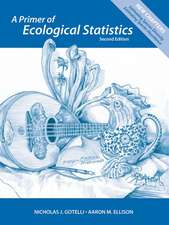Chordate Origins and Evolution: The Molecular Evolutionary Road to Vertebrates
Autor Noriyuki Satohen Limba Engleză Paperback – 25 iul 2016
In the more than 150 years since Charles Darwin proposed the concept of the origin of species by means of natural selection, which has profoundly affected all fields of biology and medicine, the evolution of animals (metazoans) has been studied, discussed, and debated extensively. Following many decades of classical comparative morphology and embryology, the 1980s marked a turning point in studies of animal evolution, when molecular biological approaches, including molecular phylogeny (MP), molecular evolutionary developmental biology (evo-devo), and comparative genomics (CG), began to be employed. There are at least five key events in metazoan evolution, which include the origins of 1) diploblastic animals, such as cnidarians; 2) triploblastic animals or bilaterians; 3) protostomes and deuterostomes; 4) chordates, among deuterostomes; and 5) vertebrates, among chordates. The last two have received special attention in relation to evolution of human beings.
During the past two decades, great advances have been made in this field, especially in regard to molecular and developmental mechanisms involved in the evolution of chordates. For example, the interpretation of phylogenetic relationships among deuterostomes has drastically changed. In addition, we have now obtained a large quantity of MP, evo-devo, and CG information on the origin and evolution of chordates.
- Covers the most significant advances in this field to give readers an understanding of the interesting biological issues involved
- Provides a unified presentation of essential information regarding each phylum and an integrative understanding of molecular mechanisms involved in the origin and evolution of chordates
- Discusses the evolutionary scenario of chordates based on two major characteristic features of animals—namely modes of feeding (energy sources) and reproduction—as the two main forces driving animal evolution and benefiting dialogue for future studies of animal evolution
Preț: 394.91 lei
Preț vechi: 429.24 lei
-8% Nou
Puncte Express: 592
Preț estimativ în valută:
75.56€ • 78.90$ • 62.40£
75.56€ • 78.90$ • 62.40£
Carte tipărită la comandă
Livrare economică 08-22 aprilie
Preluare comenzi: 021 569.72.76
Specificații
ISBN-13: 9780128099346
ISBN-10: 0128099348
Pagini: 220
Dimensiuni: 152 x 229 x 15 mm
Greutate: 0.48 kg
Editura: ELSEVIER SCIENCE
ISBN-10: 0128099348
Pagini: 220
Dimensiuni: 152 x 229 x 15 mm
Greutate: 0.48 kg
Editura: ELSEVIER SCIENCE
Cuprins
1. Deuterostomes and Chordates2. Hypotheses on Chordate Origins3. Fossil Records4. Molecular Phylogeny5. Comparative Genomics of Deuterostomes6. The Origins of Chordates7. The New Organizers Hypothesis for Chordate Origins8. The Dorsoventral-Axis Inversion Hypothesis: The Embryogenetic Basis for the Appearance of Chordates9. The Enteropneust Hypothesis and Its Interpretation10. Chordate Evolution: An Extension of the New Organizers Hypothesis11. How Did Chordates Originate and Evolve?12. Summary and Perspective









